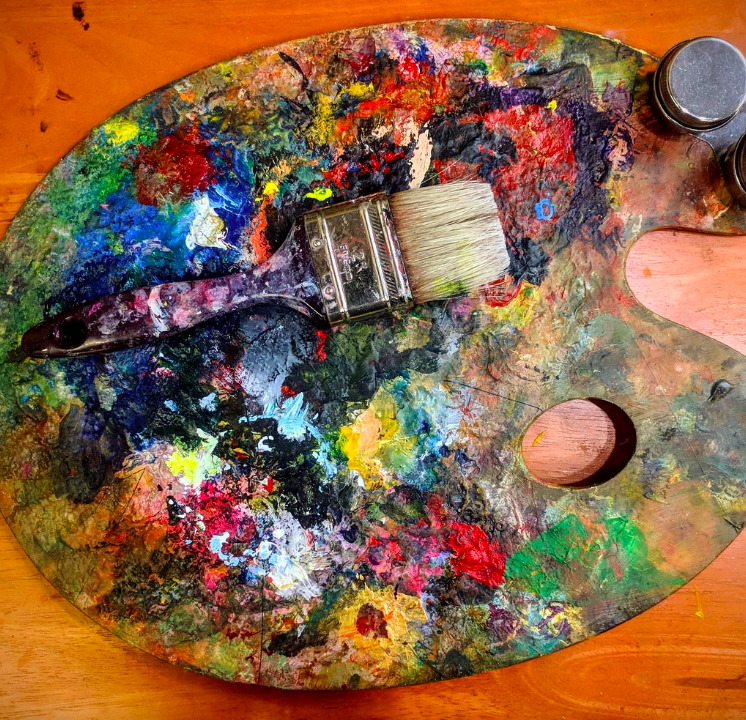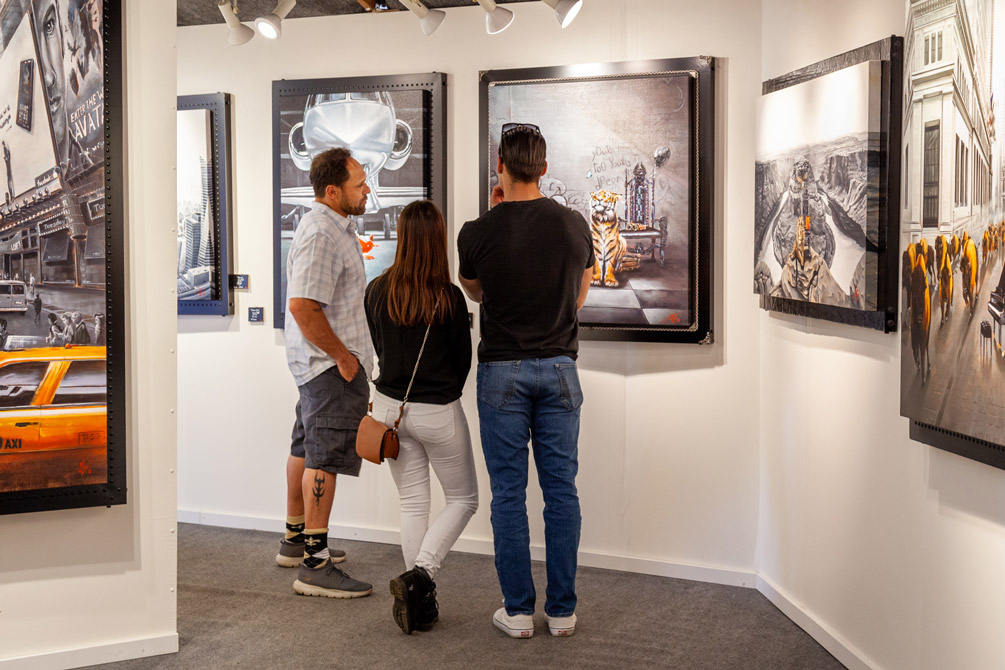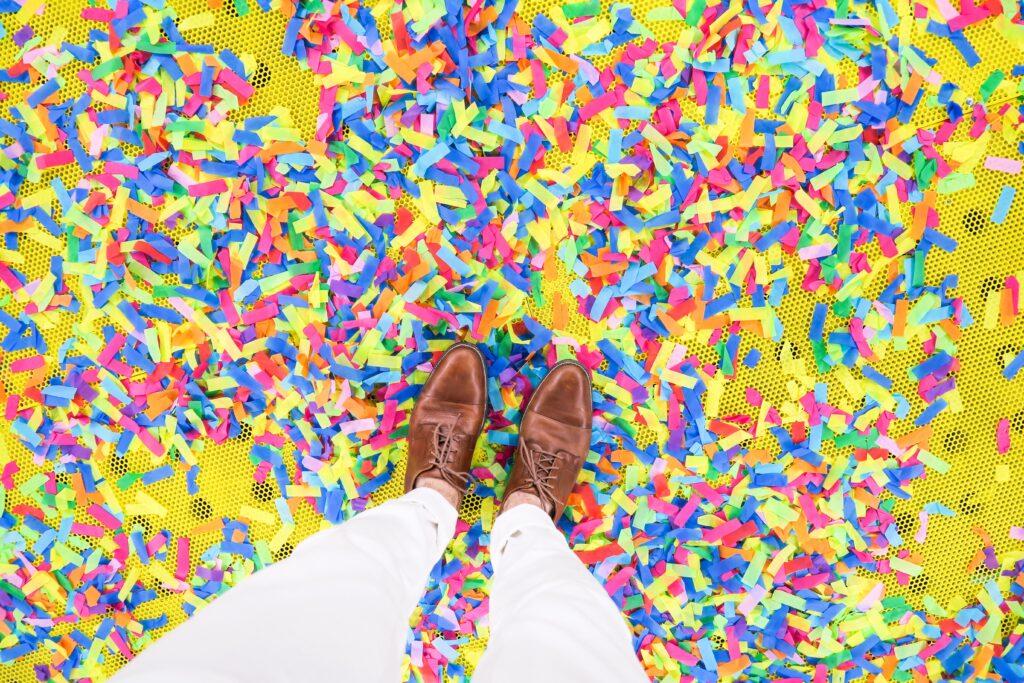The Beatles said, “Love is all you need.” But maybe there is something else. Maybe there’s a precursor to this sentiment. And maybe that thing is art.
Not to discredit the Beatles. We certainly need love. But art can spark passion, evoke deep elation, conjure up sensations of love and pure bliss, and even unlock the imagination. And there’s an increasing amount of research and scientific evidence about art’s impact on our mental wellbeing, health, brain function, and even feelings of love.
Art and the brain
In more recent years, evidence has emerged proving art enhances brain function. It has a positive impact on brain wave patterns and emotions, the nervous system, and has even been shown to raise serotonin levels. In 2017, a group of researchers who published their findings in the journal The Arts in Psychotherapy, discovered an increase in blood flow to the medial prefrontal cortex, the brain’s reward center, when participants completed various art activities.
Indeed, art has the power to change the way you view and experience the world. And its benefits are not limited to those who create it. Art has been shown to bring forward emotions that may not have previously been felt or even known. An outlet is what we all need and combining the creative with everyday life can help people. For example, when people are stuck at a crossroads in life, they look to various ways in which they can relieve their scattered minds and make a decision. Some may not know that the best psychic sites offer free readings to see what their future may hold in a spiritual and creative sense, as well as look inside themselves to find an answer which can be supported by expressing themselves artistically to open up their minds and lead them on their path. Art is an expression that should not be held in.

“When you observe a profound piece of art you are potentially firing the same neurons as the artist did when they created it thus making new neural pathways and stimulating a state of inspiration. This sense of being drawn into a painting is called “embodied cognition,” wrote Jacob Devaney, artist and founder of Culture Collective.
Art and wellbeing
Art’s benefits extend beyond the brain. According to the study, “The Connection Between Art, Healing, and Public Health: A Review of Current Literature,” by Heather L. Stuckey, DEd and Jeremy Nobel, MD, engagement with creative activities has the potential to contribute to stress reduction and depression and can serve as a vehicle for alleviating the burden of chronic disease. In fact, many studies have shown art to be a sanctuary of sorts the intense emotions associated with illness.
“It’s medically proven,” said artist Terrell Powell. “Certain images or themes are used in many hospitals for instance, because it’s documented to have a positive effect on patients and visitors.”

One qualitative study of women diagnosed with cancer, who reported feelings of fear for the future, pain, sleeplessness, role loss, activity restriction, reduced self-confidence, and altered social relationships, found engaging in different types of visual art helped in several major ways. It helped them focus on positive life experiences, enhanced their self-worth and identity by providing them with opportunities to demonstrate continuity, challenge, and achievement, and enabled them to express their feelings in a symbolic manner, especially during chemotherapy. Those suffering from various symptoms including muscle or joint pain, fatigue, IBS, and others may want to think about the health and wellness products available to them to help – perhaps even in conjunction with engaging with art. Check out these Bio X4 coupons to see about saving money on such products for a healthier you.
Art and stress
While we don’t need a study to validate it, art also has the power to reduce stress levels. Anyone who’s gotten lost in a musical performance, painting, sculpture, or dance performance can attest to this. Similar to how the body reacts to supplements like CBD oil, more specifically Vibes CBD (you can buy CBD oil UK here), studies have confirmed that viewing, creating, and participating in art therapy routines, decreased stress levels in participants. Art therapies have created an environment where one is free to express emotions and feelings without any fear of criticism or judgment. Therapies like this could help one seek clarity and heal during that process.
In a similar vein, researchers have also found viewing and creating art also helps alleviate symptoms of anxiety and depression. Of course, art is just one tool in the toolbox, but even actions as simple as doodling can have positive impacts on emotions.
“I suppose part of the appeal is that the art takes my mind off of the challenges, troubles and disappointments of life and helps me focus on the results of an artist’s creativity,” said art collector Keith Estes.
Another report, “Visual art and mental health,” by What Works Wellbeing in partnership with several major UK universities and the UK government studied the impacts of visual art on the wellbeing of adults with mental health issues. The review found that engaging in the visual arts for adults with mental health conditions can:
- reduce reported levels of depression and anxiety
- increase self-respect, self-worth and self-esteem
- encourage and stimulate re-engagement with the wider, everyday social world
- support in participants a potential re-negotiation of identity through practice-based forms of making or doing.

And another study in Norway by researchers from the Norwegian University of Science and Technology found that there was a correlation between participating in activities like creating art or attending a concert increased rates of good health, satisfaction with one’s life and lower rates of anxiety and depression in men and women. And this was true whether individuals created or consumed art passively.
“When looking at art that appeals to me, my heart rate goes down,” said Ruth Ann Sturgill, artist and art lover. “I am content to study the composition, interesting juxtaposition of shapes and colors, and I’m transported to another world, if only for minutes.”
Empathy and love
Could art bring back that loving feeling? One neurobiologist from the University of London scanned the brains of volunteers while they viewed works of art and found it triggered an immediate release of dopamine –– the chemical known as the “happy hormone” but which is also related to feelings of love, pleasure and desire.
And in an interview with NPR, Christianne Strang, a professor of neuroscience at the University of Alabama Birmingham and the former president of the American Art Therapy Association, said, “Creativity in and of itself is important for remaining healthy, remaining connected to yourself and connected to the world.”
“My art reminds me every day of special moments, the people who created it and our interactions,” said art lover and collector Ann Morrow. “There is no better reminder that the world is full of love and creative people. Art makes my spirit soar!”
So perhaps all you need is art…art is all you need.



This article reminds me why I like to hang art on every wall in my home. Walking down a hallway even there I stop and take in the mood and respond with a smile and a thought if the artist or the place represented.